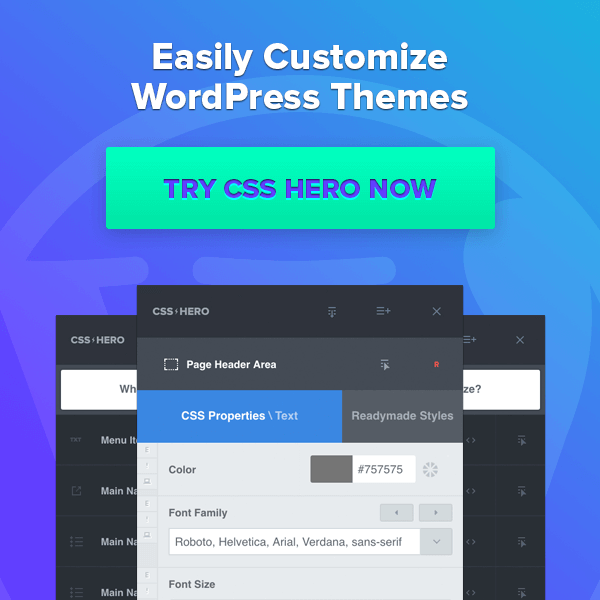
Guest Blogging is one of the most effective ways to promote your blog. Creating great content isn’t enough. The first hurdle you’ll have to pass is getting your email read. Everyone has experienced moments where their pitches failed to meet a site’s standards.
If you experience this a lot, there could be a problem on how you craft your email. As a fan of email marketing, here are ideas on how to create an email that will increase open rates, replies and get your guest posts published.

Create Killer Subject Lines
![]()
Learning how to create subject lines will prevent your email from being sent into the spam folder in the future and increase your open rates. Here are a few pointers to consider when creating subject lines:
- Get straight to the point – Sending emails with subject lines like “Guest Post Inquiry” or “Blog Post Query” states your email’s content to the editor immediately.
- Make it short and simple – Put yourself in the editor’s shoes. People receive tons of emails within the day. The subject line should take at least below 3 seconds to read and be written below 50 characters.
- Consider it a headline – A great way to increase open rates would be to place your headline on the subject line. An example would be: “Guest Post Query:[Headline]” or “Guest Post:[Headline]”. Make sure to learn how to create amazing headlines. Here are a list resources on how to create killer headlines.
- Leave a bit of mystery – Reveal a bit of information on your email’s content on the subject line. This increases the editor’s interest on your email. A few examples of these are: “I can help your site out”, “Your Site Lacks The Topic [headline]”, or “There’s a problem on your site”
- Ask a question – Start by interacting with the editor. Ask something about them or their site. It’s an effective way to engage the editor and create an opening to send a pitch.
Start With An Introduction
Editors and Publishers value greetings. It’s what makes them feel special. I mean, who doesn’t? Make sure to try your best to find out the editor’s name. They would prefer their names over informal lines such as “Yo Editor,”, “Hello,”, or “Heya!”
An email’s second paragraph is the room for the Guest Poster’s introduction. Introduce yourself by stating your name, your niche and your site.
Do your Research
Take your time to research the blog’s content before sending an email. Bloggers prefer written guest posts from people who have read their site. Jon Morrow’s Guest Blogging program recommends reading everything on the blog. Do this by reading their archived content, their guidelines, and comments. This should help you get an idea of what the readers want to read.
Another great idea would be to let the editor know your name by slowly introducing yourself. You can do this by interacting on their site, their comments section, their twitter, emails, and tools such as Triberr. This is a method that requires you to invest a lot of time. But don’t be depressed, this increases your chances of getting published ten fold.
Come Up With A Topic
Once you’re familiar with the site, don’t expect anyone to spoon feed you. Asking for topic ideas is an amateur mistake. You are the content creator; provide topic ideas that the editor or the blog can not offer themselves. Make sure that you also leave an excerpt or summary about the topic. It gives the editor an idea what you’ll be writing.
I recommend sending three topics. This gives the editor more options to choose from. The idea of giving more topics reduces your chances of being rejected.
Build Credibility
Always include a list of your previous published posts. It helps the editor know your writing capabilities. Don’t be afraid to use published posts on your site. Although, I do recommend placing published guest posts because it shows that other sites are willing to publish your articles.
If you lack published guests posts, you can start by pitching to smaller blogs. You easily find these through search engines and social media. You can even make a proposal here at Learn To Blog.
State Your Intentions
Let them know that your intentions for Guest Blogging are simple. If you follow their rules on Guest Posting. I don’t see why they wouldn’t consider your offer. You can find out what type of writers they want on their site by reading their site’s rules and guidelines.
End Pitches Properly
I’ve found out that most editors don’t usually know what to do with your email. End your emails with a call to action; otherwise, you’d be lucky to get a reply. Here are great ideas on how to end your pitches.
End your email by being as polite as possible. Guest posting starts a great relationship between bloggers. If you’re rude, arrogant, or obnoxious. I doubt they would do you any favors.
Everyone likes reading a nice sign-off. If you want to seem more human and professional, add more contact information at your signature.
Email Template Alternatives
Hello [Editor]
It’s me again [Your name] 🙂
I’ve recently created a new post for your site. Would it be possible to Guest Post on your site again?
Thank you,
[Your name]
This is for blogs you’ve already published a Guest Post on. You don’t have to try so hard if you’ve already established a relationship. Keep your email short, simple, and polite.
Hello [Editor]
I’d like to read certain topics on your site such as [Topic #1] and [Topic #2]
I am an avid reader of your site. If you want proof, you can find on your site’s comment section. I adore your topics on [Site Topic #1], [Site Topic #2], and [Site Topic #3]. [topic #1] or [topic #2] can help .
But I know you’re busy. But I will give you an offer you can’t reject. I’ll write it for you.
Just inform me of any guest posting guidelines. [If blog does not have a contribute page]
But if you still doubt my Guest Posting capabilities. You can check out my published posts here:
[Guest Post Link #1]
[Guest Post Link#2]
[Guest Post Link#3]
Let me know if you’re interested
Thanks so much,
[Your name]
This is an example of an effective yet risky alternative email template. It’s something I discovered from Niel Patel’s email templates. Use this for sites that don’t have any pages about Guest Posting or Contribution.
Follow Up Emails
Hello [Editor],
[Your name] here, I sent you an email last week and I was wondering whether you were still interested.
Thanks,
[Your Name]
Sending emails to editors is scary, there are chances that the editor might have been too busy to reply to you or that your email was mistakenly sent to the spam folder. But don’t fret, you can still follow-up. Most bloggers tend to forget about this but a follow-up is an email that reminds recipients or editors that you’ve sent them an email.
Important Note: There are some blogs out there that place a warning on their guidelines such as: “If we do not reply within 6 weeks, stop sending us emails” Abide to their rules, stop following up and email them again when you have created better content.
More importantly, organize the people you send your emails to. Always take note of the names and dates of people you’ve sent an email on paper or in a spreadsheet.
Bad Email Templates
This email disregards every single thing I’ve stated above:
- He has not mentioned my name and is obviously unfamiliar with my site.
- He didn’t tell me who he was. Don’t expect me to have time to search your name.
- I will not give him topic ideas. I do not spoon feed guest bloggers.
- He’s overconfident but wasn’t even able to give me links to his published posts. How would I know his writing capabilities?
Most blogs dislike getting emails from companies because:
- It would be difficult to create a relationship
- You can’t trust their content
- It’s possible to get a bad set of audience
- Emails that are similar to this are usually outside the blog’s niche.
- Fellow bloggers are better at creating articles that talk to readers on a personal level
I like this better than the previous two. But it still has problems. Here are a list of them:
- It’s obvious he didn’t take his time to personalize it. There are a lot typos in the email
- He did not give me any of his published works
- He did not give excerpts or summaries about his topics
Things To Take Note Of:
- Personalize your emails. Blog owners want to feel special. We like emails that were not obviously spammed to other sites. Always take your time to personalize your emails.
- Do not sell your links. Do not pay editors for your posts. Most blogs do not want the impression that they’re buying links.
- Don’t expect to get paid. Do not ask for compensation unless the guidelines say otherwise.
- Provide unique content. Do not send copyrighted articles or previously written ones. No one likes getting posts that have been all over the web. Every blogger wants fresh content. It’s why they’re availing guest posts.
- Do your research beforehand. Take your time to research the site. Determine what the readers want to see. Check out their Rules and Guidelines before sending pitches.
- Be careful of using attachments. People are wary of attachments because of possible threats against their computer. Send your attachments as Text Files (.txt).
- Don’t be intimidated. Editors are considerate people. Don’t let intimidation and fear stop you from Guest Posting.
Whole Email Template:
Hello [Site Owner],
[Your Name] here, I am the owner of the blog [Your Site] My blog’s content centers on niches about [Site’s Niche]. I also specialize in niches about [Your Niche]
I am an avid reader of your site. [Reasons Why You’ve Read Their Site]
The posts on your site [Site Post #1], [Site Post #2], and [Site Post #3] [were extremely helpful] or [were great reads]. [Explain here why it’s great]
I made a list of topics that you and your readers would love to read. But I know that you’re busy with work, so I’d like to write it for you. Here are the list of topics:
[Topic #1]
[Summary or Excerpt For Topic]
[Topic #2]
[Summary or Excerpt For Topic]
[Topic #3]
[Summary or Excerpt For Topic]
If you want to see my writing and blogging capabilities here are my published works online:
[Site Link #1]
[Site Link #2]
[Site Link #3]
I only intend to inform fellow [Niche Readers]. All I ask are relevant links on your site to help promote my blog. I can easily abide to your site’s content and writing style.
Let me know if you’re interested,
I look forward to hearing from you,
[Your Name]
Be Human…
Remember that editors are humans too. Treat them like one and I’m sure they’ll give you a chance.
Mastering pitches takes a bit of trial and error. But luckily for you, It only takes a few steps and a bit of research to create a perfect pitch for Guest Posting.
Why don’t you try it out? If you’re confident of your writing, send us an email.
















